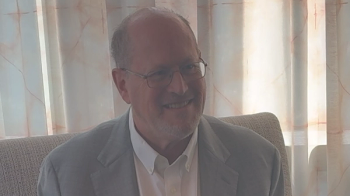
Bridging Radiation Therapy Safe, Feasible for Patients with R/R Multiple Myeloma
“The most important takeaway here is that bridging radiation doesn’t appear to increase the risk of [cytokine release syndrome; CRS] or neurotoxicity,” said lead study author Shwetha Manjunath, MD.
Results from a study presented at the American Society for Radiation Oncology (ASTRO) Annual Meeting suggested that radiation therapy administered to patients with relapsed or refractory multiple myeloma awaiting CAR T-cells is safe and feasible without worsening rates of severe cytokine release syndrome (CRS), neurotoxicity, or hematologic toxicity.1
These new findings lend more support to future studies that combine radiation with cellular therapy.
“The most important takeaway here is that bridging radiation doesn’t appear to increase the risk of CRS or neurotoxicity,” lead author Shwetha Manjunath, MD, a resident in Radiation Oncology in the University of Pennsylvania Perelman School of Medicine, said in a press release.2 “These patients safely received bridge radiation without it affecting the efficacy of CAR T-cells or the rates of toxicity.”
Overall, 25 patients with relapsed or refractory multiple myeloma were treated in 3 cohorts, including 9 patients treated with 1-5 x 108 CART-BCMA cells (cohort 1), 5 with cyclophosphamide (Cy) 1.5 g/m2 + 1-5 x 107 CART-BCMA cells (cohort 2), and 11 with Cy 1.5 g/m2 + 1-5 x 108 CART-BCMA cells (cohort 3). Researchers then retrospectively collected details on radiation therapy, response, toxicity, and CAR T manufacturing data.
Group 1 consisted of 13 subjects who received no radiotherapy within 1 year prior to CAR T infusion. Group 2 was made up of 8 subjects who received radiotherapy within 1 year prior to CAR T infusion with a median time from radiotherapy to apheresis of 88.5 days (range 15-295). Moreover, group 3 consisted of 4 subjects who received bridging radiotherapy with a median time from apheresis to radiotherapy of 17 days (range 14-22) and from radiotherapy to CAR T infusion of 34 days (range 21-42).
Importantly, radiotherapy sites treated in group 3 included skull base, spine, pelvis, and orbits treated with 4 Gy x 5 fractions, 8 Gy x 1, 4 Gy x 6, and 3 Gy x 10, respectively, using 3D-conformal radiation therapy.
Group 3 was found to have lower rates of grade 4 hematologic toxicities compared with groups 1 and 2 (25% vs. 61.5% and 62.5%). Group 3 also had no grade 3 or higher gastrointestinal, infectious, or liver-related toxicities.
Neurotoxicity was low with grade 3 toxicities observed in 7.7%, 25%, and 25% in group 1, 2, and 3, respectively. Only 2 grade 4 toxicities were observed in group 2 (25%). Moreover, grade 2 CRS was comparable among the treatment groups, while grade 3 CRS was found to be slightly higher in group 1 (38.5% vs. 25% in Group 2 and 3). Only group 2 had 1 grade 4 CRS (12.5%).
Prior analysis revealed a lower dose of CART-BCMA cells led to the smallest response, so researchers also compared cohort 2 patients with and without bridging radiation therapy. Cohort 2 patients without bridging radiation therapy (n = 3) had no response whereas those with bridging radiation therapy (n = 2) had minimal response and partial response both in and out of the radiation therapy field.
“Our work is hypothesis generating, hinting at a potential synergism between radiation and CART-BCMA therapy, which has been reported by others in the literature,” Manjunath explained. “Future prospective trials that combine radiation with CART-BCMA may further optimize safety and long-term efficacy of this novel cell therapy.”
Of note, Penn researchers presented findings at ASTRO in 2019 that similarly revealed that radiation did not interfere with the efficacy of CAR T-cell therapy in patients with non-Hodgkin lymphoma and also had the potential to lower side effects in these patients.
References:
1. Manjunath SH, Cohen AD, Arscott WT, Maity A, Plastaras JP, Paydar I. Is Bridging Radiation (RT) Safe with B Cell Maturation Antigen–targeting Chimeric Antigenic Receptor T Cells (CART-BCMA) Therapy? Presented at the American Society for Radiation Oncology (ASTRO) Annual Meeting. Abstract #:
2. Penn Study Supports Use of Radiation Before CAR Therapy for Multiple Myeloma [news release]. Philadelphia. Published October 27, 2020. Accessed November 5, 2020. https://www.pennmedicine.org/news/news-releases/2020/october/penn-study-supports-use-of-radiation-before-car-therapy-for-multiple-myeloma
Newsletter
Stay up to date on recent advances in the multidisciplinary approach to cancer.


















































































